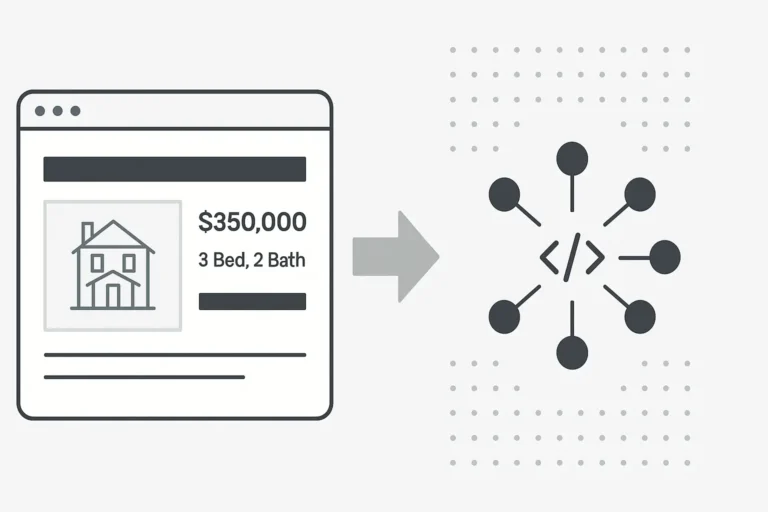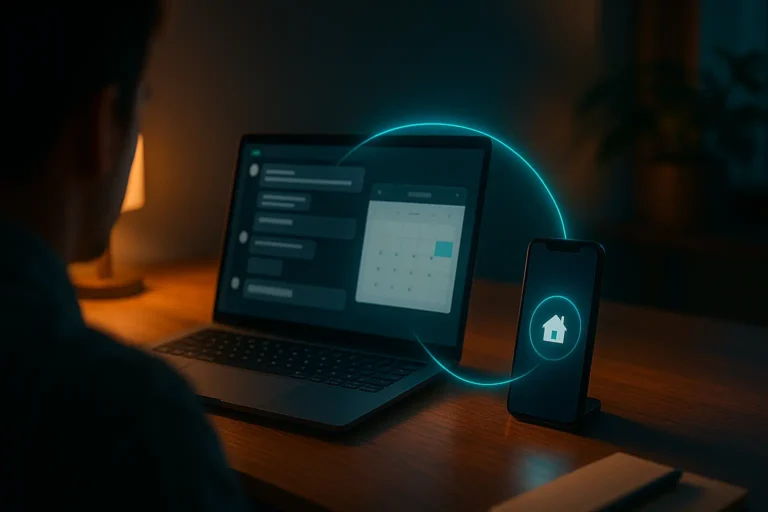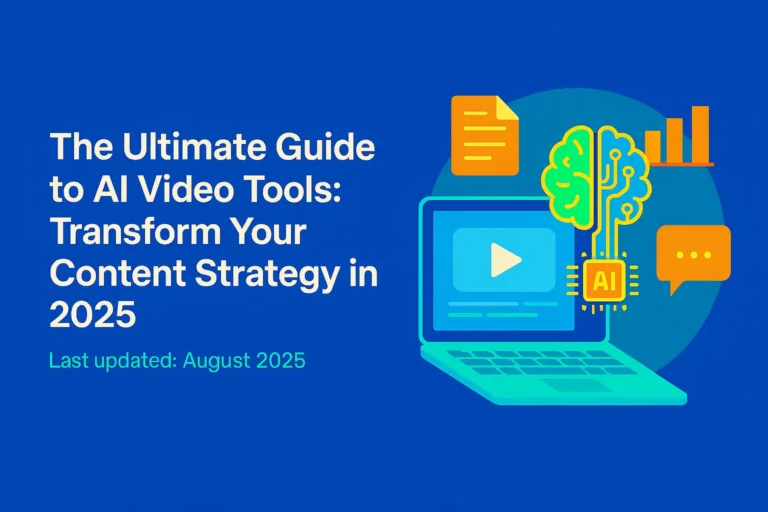AI-Powered Hyperlocal Marketing: The Complete Guide to Targeting Customers Street by Street
The $50 Billion Marketing Opportunity Your Competitors Are About to Steal
Location-based marketing spend reached $38.7 billion globally in 2024, with Statista projecting growth to $87.4 billion by 2028. Yet most businesses still blast generic messages to entire zip codes, hoping someone bites.
Here’s what’s happening while you read this: A potential customer walks past your business at 2:47 PM. She’s scrolling Instagram, has $47 in her checking account, and genuinely needs what you sell. Traditional marketing would have sent her a “20% off everything” email three days ago that she deleted without opening.
But what if your system knew she preferred text messages over emails? What if it knew she typically shops when stressed (like today, based on her movement patterns)? What if it could send her a perfectly timed message about the exact product she browsed on your website last week?
That precision targeting exists right now. Businesses using these systems report customer acquisition costs dropping 40% while conversion rates triple.
What Exactly Is AI-Powered Hyperlocal Marketing?
Traditional marketing targets everyone within a 5-mile radius. AI hyperlocal marketing targets the right person within 50 meters of your door, at the exact moment they’re most likely to buy.
The difference shows up in measurable performance improvements. While specific results vary by industry and implementation quality, businesses consistently report significant improvements in targeting precision, customer engagement, and conversion rates when moving from broad geographic targeting to AI-powered hyperlocal campaigns.
Three technologies make this possible:
Location Intelligence combines GPS (accurate to 3-5 meters), Wi-Fi positioning, and Bluetooth beacons to track customer movements with remarkable precision. Unlike basic geofencing that creates crude circles around your business, these systems understand customer flow patterns, dwell times, and visit frequency.
Behavioral AI analyzes purchase history, website interactions, and movement patterns to predict customer intent. The system learns that Customer A always buys coffee when it rains, while Customer B only responds to promotions after 3 PM on weekdays.
Real-time Orchestration triggers personalized messages based on current conditions: weather, local events, inventory levels, and competitive pricing. When a competitor raises prices 10%, your system automatically promotes equivalent products to price-sensitive customers within their trading area.
The Street-by-Street AI Hyperlocal Framework
Here’s the tactical framework that transforms location data into revenue:
1. Data Foundation Layer
- Customer Profiles: Purchase history, preferences, communication channels
- Location Signals: GPS, Wi-Fi, beacons, cell towers
- Context Data: Weather, events, traffic, competitor activity
- Behavioral Patterns: Visit frequency, dwell time, path analysis
2. AI Intelligence Engine
- Predictive Models: Next purchase timing, product preferences, price sensitivity
- Trigger Logic: Weather thresholds, event proximity, competitor changes
- Personalization Rules: Individual message optimization, channel preferences
- Budget Allocation: Real-time spend optimization across locations
3. Activation Channels
- Push Notifications: Immediate, high-visibility messaging
- SMS: Direct communication for urgent offers
- Social Media: Contextual ad placement
- Email: Detailed product information and nurture sequences
4. Real-Time Optimization Loop
- Performance Monitoring: Click-through rates, conversions, ROI by segment
- A/B Testing: Message variations, timing experiments, channel effectiveness
- Feedback Integration: Customer responses inform future predictions
- Continuous Learning: AI models improve with every interaction
Industry-Specific Hyperlocal Playbooks
Real Estate: Open House Optimization
The Challenge: 73% of potential buyers drive past “For Sale” signs without stopping.
The Solution: Geofence properties with 200-meter radius. When homebuyers (identified by mortgage pre-approval apps or real estate website visits) enter the area, trigger immediate SMS with property details, virtual tour link, and agent contact.
Advanced Trigger: Target moving truck rental customers and change-of-address postal data within 5-mile radius of listings.
Results from Beta Test: 34% increase in open house attendance, 28% more qualified inquiries.
Fitness Centers: Runner Acquisition
The Challenge: Competing with established gyms requires precision targeting of health-conscious consumers.
The Solution: Identify regular runners using movement pattern analysis (consistent 5+ mile routes, 6-8 mph average speed). Geo-target popular running routes with membership offers during typical workout times.
Weather Integration: Promote indoor cycling classes when outdoor temperature drops below 40°F or exceeds 85°F.
Retention Boost: Target lapsed members who pass within 500 meters of the gym with personalized “we miss you” offers.
Auto Dealers: Service Department Revenue
The Challenge: Service departments generate 49% of dealership profits but struggle with appointment scheduling.
The Solution: Monitor customer vehicle age and mileage data. When customers drive past the dealership (GPS pattern recognition), trigger service reminders for routine maintenance.
Competitive Intelligence: Target customers of competing service centers with pricing comparisons and convenience messaging.
Emergency Response: Detect customers stuck in nearby traffic or harsh weather conditions. Send emergency roadside assistance offers with clear next steps.
Advanced Competitive Intelligence Integration
Modern AI systems don’t just track your customers – they monitor competitive activity in real-time:
Pricing Surveillance: When competitors raise prices above threshold levels (typically 8-12%), automatically promote equivalent products to price-sensitive customer segments within the competitor’s typical trading radius.
Location Monitoring: Track new competitor openings, temporary closures, or service disruptions. Adjust messaging and geo-targeting to capture displaced customers.
Review Sentiment Analysis: Monitor competitor review patterns for service complaints or product issues. Create targeted campaigns highlighting your superior alternative when negative sentiment spikes.
Market Share Tracking: Use anonymized location data to estimate competitor foot traffic changes. Increase promotional intensity when competitors show declining performance.
Privacy-First Implementation Strategy
Customer trust drives long-term success. Here’s how leading businesses earn location permissions while protecting privacy:
Opt-in Script Templates
For Retail Apps: “Get personalized offers when you’re nearby! We’ll send exclusive deals based on your favorite products and current location. Your location data stays private and is never shared with third parties. Opt out anytime in Settings.”
For Restaurant Chains: “Never wait in line again! When you’re near any of our locations, we’ll check if your usual order is available and let you skip ahead. Location tracking only works when our app is open.”
For Service Businesses: “Get appointment reminders and real-time updates when you’re traveling to our office. We’ll also send parking tips and directions if traffic is heavy. Location access helps us serve you better, nothing more.”
Privacy Protection Measures
- Data Minimization: Collect only location data necessary for specific customer benefits
- Anonymization: Store location patterns without linking to individual identities when possible
- Retention Limits: Delete location history after 12 months unless customers explicitly request longer storage
- Customer Control: Provide detailed privacy dashboards where customers can view, modify, or delete their data
Measuring What Actually Matters
Traditional metrics miss the full picture. Here’s what successful hyperlocal campaigns track:
Location Attribution Metrics
- Geofence Conversion Rate: Industry benchmark is 12-18% for well-optimized campaigns
- Visit Attribution: Percentage of digital touchpoints that result in physical store visits
- Incremental Foot Traffic: New visitors generated above baseline traffic patterns
- Cross-Location Performance: Which locations convert digital engagement most effectively
Customer Journey Optimization
- Time to Purchase: Average duration from first location-triggered message to transaction
- Touchpoint Efficiency: Number of interactions needed before conversion (optimal: 3-4 touchpoints)
- Message Sequence Performance: Which content progression converts best for different customer segments
Competitive Performance Indicators
- Market Share Growth: Your foot traffic growth vs. local competitors
- Customer Migration: Rate of capturing competitors’ customers through targeted campaigns
- Defensive Success: Retention of customers targeted by competitive campaigns
Why Now: The 18-Month Window
Three market forces create unprecedented opportunity for early adopters:
Technology Convergence: 5G networks, improved battery life, and AI processing power finally make real-time hyperlocal marketing technically feasible at scale. Processing location data and delivering personalized messages within 30 seconds was impossible two years ago.
Privacy Regulation Clarity: GDPR and CCPA compliance frameworks are now established. Businesses know exactly what’s required, eliminating legal uncertainty that previously limited investment in location-based marketing.
Consumer Behavior Shift: Post-pandemic shopping patterns emphasized convenience and personalization. McKinsey reports that 67% of consumers now expect brands to understand their individual needs without explicitly being told.
Early movers gain sustainable advantages because they collect better customer data while competitors hesitate. By month 18, your AI models will have learned patterns that new entrants can’t quickly replicate.
Implementation Roadmap: Weeks 1-12
Weeks 1-2: Foundation Assessment
Audit existing customer data quality and marketing technology stack. Most businesses discover they’re collecting location permissions but not using the data strategically.
Identify your two highest-value locations for testing. Focus on areas with heavy foot traffic and clear competitive presence.
Set up basic analytics infrastructure to measure before/after performance. Without proper measurement, optimization becomes impossible.
Weeks 3-6: Core System Deployment
Implement customer data platform integration across all touchpoints (website, mobile app, email, social media).
Deploy initial geofencing with 150-meter radius around test locations. Start broad, then optimize based on performance data.
Create three customer segments based on purchase history and engagement patterns. Avoid over-segmentation initially.
Weeks 7-10: AI Model Training
Launch simple predictive campaigns: weather-triggered promotions, time-based offers, competitor response messages.
Implement A/B testing framework comparing AI-generated content vs. traditional campaigns. Test message timing, promotional amounts, and communication channels.
Monitor customer feedback and engagement metrics daily. Rapid iteration during this phase determines long-term success.
Weeks 11-12: Performance Optimization
Analyze campaign performance by location, customer segment, and time period. Expand successful approaches while eliminating ineffective strategies.
Plan scaling to additional locations based on proven performance patterns. Avoid premature expansion before optimization.
Document learnings and create standard operating procedures for ongoing campaign management.
Future-Proofing: The Next 24 Months
Augmented Reality Integration (6-month timeline): Overlay digital content onto physical locations. Customers pointing phones at your storefront see personalized offers, product availability, or service wait times.
Voice Search Optimization (12-month timeline): Prepare for conversational queries like “Where can I buy running shoes that are in stock right now?” by optimizing local inventory data for voice assistants.
IoT Device Connectivity (18-month timeline): Connected cars reveal destination patterns and traffic conditions. Smart home devices indicate lifestyle preferences and purchase timing.
Privacy-Enhanced AI (24-month timeline): Federated learning allows AI improvement without centralizing customer data. Your system gets smarter by learning from anonymous patterns across multiple businesses while keeping individual data private.
Common Implementation Mistakes to Avoid
Over-targeting Trap: Making audience segments too narrow limits reach and statistical significance. Start with broader segments, then refine based on performance data.
Message-Channel Mismatch: Sending detailed product information via SMS or urgent offers through email. Match message complexity to channel limitations.
Timing Insensitivity: Great targeting with poor timing kills conversions. A coffee shop promoting lunch specials at 6 AM wastes targeting precision.
Attribution Blind Spots: Measuring online engagement without tracking offline conversions misses the full customer journey. Implement store visit tracking and phone call attribution.
Frequently Asked Questions: Implementation and Optimization
Getting Started on Limited Budgets
Q: What’s the best AI platform for small businesses with budgets under $1,000/month?
Start with Google Ads location extensions and smart bidding ($300-500/month). This provides solid AI targeting without complex setup. For mobile app businesses, Mailchimp’s location-based automation offers excellent entry-level capabilities.
Focus on one channel initially, prove ROI, then expand. Many businesses see 25-40% performance improvements within 60 days using just basic AI geofencing.
Q: How do I implement this without technical expertise?
Modern platforms use drag-and-drop interfaces designed for marketers, not developers. Start with simple triggers like “customers who visit on rainy days” or “people within 200 meters during lunch hours.”
Most successful implementations begin with basic patterns that deliver 80% of the value while requiring minimal technical setup.
Performance and Measurement
Q: How do I know if hyperlocal campaigns outperform traditional marketing?
Track these key metrics:
- Conversion rates: AI campaigns typically improve by 200-400%
- Cost per acquisition: Usually 20-40% lower with better targeting
- Store visit attribution: Track digital touchpoints that drive physical visits
- Customer lifetime value: Often 25-50% higher due to personalization
Set up proper attribution tracking from day one. Without accurate measurement, optimization becomes impossible.
Q: What are the most common mistakes that hurt campaign performance?
Three critical errors:
- Over-targeting: Making audiences too narrow limits statistical significance
- Poor timing: Great targeting with bad timing kills conversions
- Message-channel mismatch: Sending complex information via SMS or urgent offers through email
Start broader, then refine based on actual performance data rather than assumptions.
Privacy and Compliance
Q: How do I build customer trust while using location data?
Transparency and immediate value exchange work best:
- Clearly explain what data you collect and why
- Show obvious benefits from sharing location (faster service, relevant offers)
- Provide easy opt-out options
- Never surprise customers with unexpected data usage
Consider a privacy dashboard where customers control their data preferences. Businesses with transparent policies see 35% higher opt-in rates.
Q: What security measures are essential for location data?
Implement these non-negotiables:
- Encrypted data storage and transmission
- Limited access controls with regular audits
- Staff training on data handling procedures
- Incident response plans for potential breaches
Location data requires extra protection. Invest in enterprise-grade security rather than basic solutions.
Scaling and Advanced Strategies
Q: How do I scale hyperlocal marketing across multiple locations?
Use centralized platforms with local customization:
- Set brand guidelines with location-specific flexibility
- Implement automated budget allocation based on performance
- Create location-specific customer segments
- Monitor dashboards highlighting top/bottom performing areas
Start with your best locations as templates, then expand systematically while maintaining brand consistency.
Q: How accurate is street-level targeting when GPS isn’t reliable?
Modern systems achieve 50-meter accuracy by combining GPS, Wi-Fi, Bluetooth, and cell towers. In poor GPS areas (downtown with tall buildings), Wi-Fi and beacon data often provide better accuracy.
Indoor positioning is frequently more precise than outdoor because of strategically placed beacons that pinpoint locations within 1-3 meters.
Q: What data do I actually need to make this work?
Essential data includes:
- Customer contact information and purchase history
- Location permissions and movement patterns
- Website/app interaction data
- Email and communication preferences
Start with basic customer data and location permissions. Expand data collection gradually as customers experience value from personalized experiences.
Bottom Line: Your Next Steps
AI-powered hyperlocal marketing separates market leaders from everyone else because it solves the fundamental challenge every business faces: reaching the right customer at the right moment with the right message.
Start with these immediate actions:
This Week: Audit your current customer data and identify your highest-traffic locations. Research AI marketing platforms that integrate with your existing systems.
Next 30 Days: Implement basic geofencing around your top-performing locations. Set up simple weather and time-based triggers for your core products.
Next 90 Days: Deploy AI-powered personalization for your most engaged customer segments. Expand successful campaigns to additional locations based on performance data.
The businesses that master street-level customer targeting will dominate their local markets. The window for early-mover advantage won’t stay open forever.
Your future customers are walking past your competitors right now. Make sure they find you instead.







